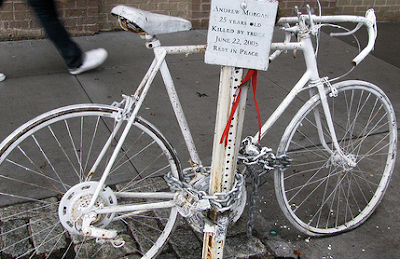

 Works from Murad Khan Mumtaz's "Torn with fire" series, reproduced with permission from the artist
Works from Murad Khan Mumtaz's "Torn with fire" series, reproduced with permission from the artistIn Pakistani artist
Murad Khan Mumtaz's series "Torn with fire," ghosts appear to materialize on the faces of U.S. dollars, bomb clouds expand to engulf the currency's face, and expanses of black or white blur out the intricate details of the bills. But while such imagery -- and interventions into the top symbol of American capitalism -- is decidedly political, the Lahore-born, Columbia University–educated artist was reluctant at first to make the kind of work he detests: sociopolitical art. In a fascinating two-part interview with
ART on AIR's Peter Brock, he tells of how the haunting project came to be.
Long mastering the painstaking art of Persian and Indian miniature painting, he found himself applying tiny dots in a "meditative and almost an escapist exercise" to make "cloud forms." Then his professor, artist Kara Walker, tried to push him out of his comfort zone. "What embarrasses you in art?" he recalls her asking.
"What kept coming up is the sociopolitical," he said. "That's one thing I've been running away from and almost detest."
Through the project, which was
on view in the just-closed 2010 Columbia MFA thesis show at the Fisher Landau Center for Art, explored ways to subvert the bills -- and the idea of political art that's so popular in the west -- and "make it more contemplative." His artist's statement says that "through the slow and disciplined application of tiny dots (
pardakht) and lines (
tipai) Mumtaz transforms the bills into uncanny objects whose ambiguous imagery is at once meditative and foreboding, nostalgic for a lost past and steeped in premonitions of losses yet to come."



In doing so, he navigates between modernity and tradition, melding an ancient, delicate artform with a symbol so of-the-moment it's called "currency." He says he was also thinking about instability, in his personal life and in the economy, while working on the series, and his imagery of ghosts, smoke and clouds reference that: they're "almost invisible, neither air nor water, but something in between."
On one hand, he tells Brock you have bills, something "as material as you can get... and yet you have that technique and that image which sorts of transcends that, transcends materiality."
There's another tension as well, between lasting beauty and the crass immediacy of commerce: "Beauty with a capital B being something that is timeless... When you say the word 'dollar bill' it becomes something very sort of base. And yet, the bill itself has been made so beautifully."



And this is where he gets even more political. In the exacting process of miniature painting, he came to realize the deeper significance of the dollar bill as medium.
"It started out just making the cloud form and using one's own technique on the bill, then I realized that the dollar bill itself has such a history of its own, and such a weird history which is linked with imperialism, with white supremacy, with a sort of white power. Those things started to seep in unconsciously."
Implicit in that history is war, he adds. Mumtaz says he's influenced by two Lebanese creators, artist
Walid Raad and writer/filmmaker
Jalal Toufic. Toufic, he says, writes that ghosts are "the aftermath of war, but anyone who has gone through war is, in a way, a ghost or is part of the undead. They have already seen death. And people who carry out war, and people who drop the bomb, for example, that person is also part of the undead."
"That became very fascinating for me, because, you know, the dollar bill itself is a driving force for war, for imperialism. And that connects back to the notion of the ghosts appearing out of the dollar."


































